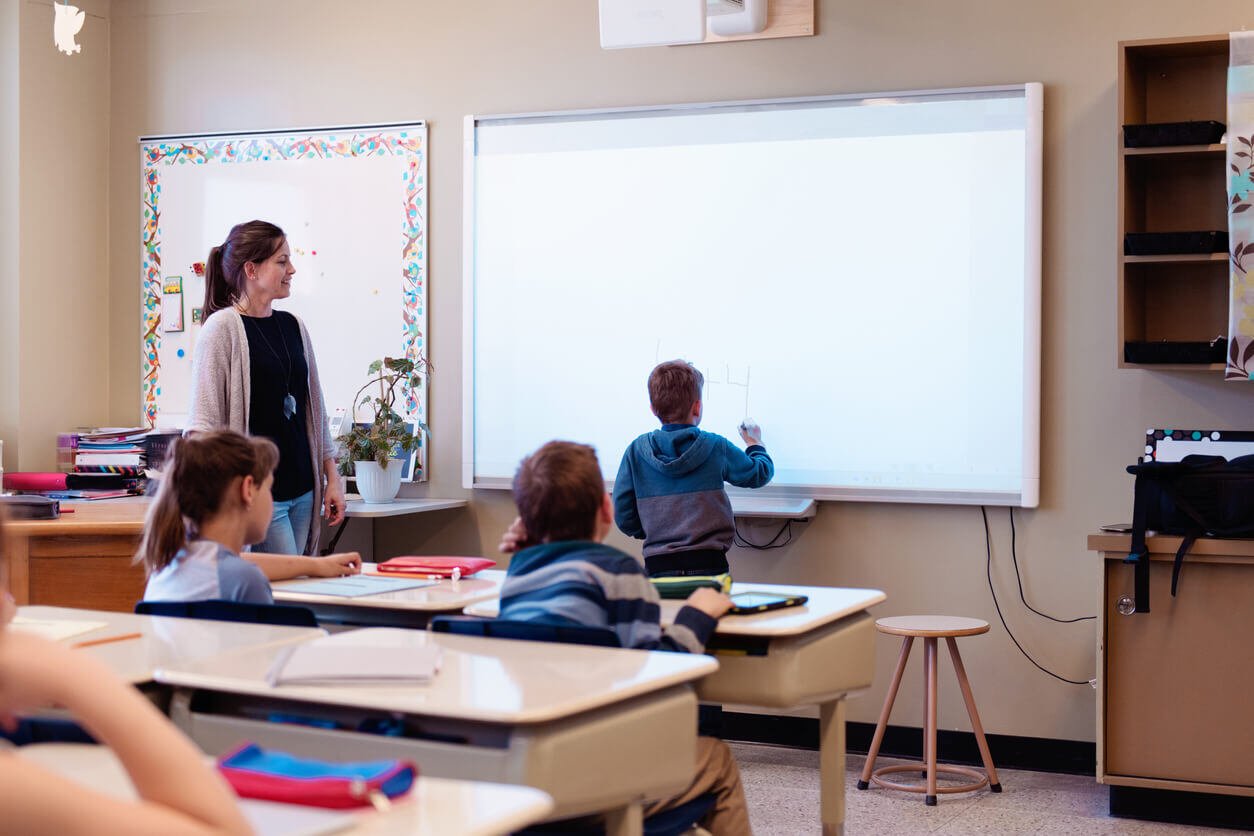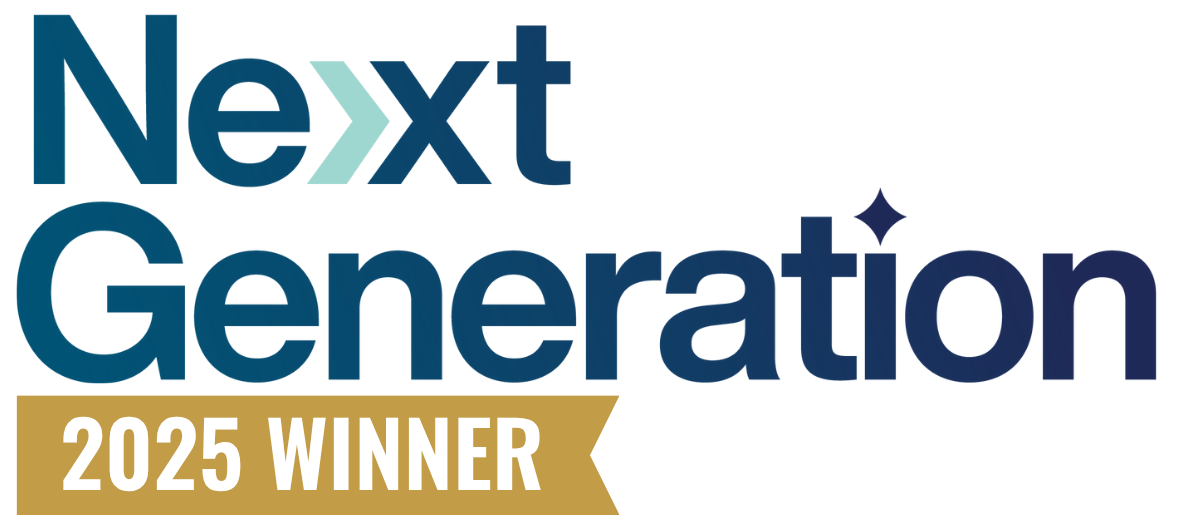The best teachers aren’t just experts in their field; they’re also fascinated by how their students learn. They adapt their methods as new technology, research, and generational preferences emerge to ensure every student soaks in as much knowledge in their classroom as possible.
An excellent medium for achieving this goal is interactive whiteboards (IWBs). IWBs are instrumental in modern education, transforming how teachers deliver lessons, and students engage with the content.
Today, we’ll dive into the many valuable ways educators can use interactive whiteboards in schools.
Why Interactive Whiteboards Matter in Education
Research has long proven that engagement and active participation in the classroom increase knowledge gain and retention. The Proceedings of the National Academy of Sciences study cited above also mentions that while students thought they learned more in a traditional lecture-style classroom, they actually learned more in hands-on, active learning environments. This makes it important to use tools and methods that support this more active approach.
Interactive whiteboards are one piece of the puzzle. These tools boast interactivity, multimedia integration, and collaboration functionality. IWBs provide a critical solution that caters to various learning styles and needs while increasing student engagement—a critical metric for long-term learning.
Core Benefits of IWBs in the Classroom
IWBs offer many opportunities to uplevel the modern classroom. Let’s review some of the most important:
- Enhanced Engagement: IWBs capture students' attention through dynamic visuals and interactive content, making lessons more engaging than traditional, lecture-style methods. Research shows that students are more likely to retain information when they are actively involved in the learning process.
- Collaborative Learning: These tools facilitate group work and discussions, allowing students to interact with the content and each other. This collaboration fosters critical thinking and communication skills, which are essential for success in any future career.
- Resource Accessibility: Teachers can easily integrate multimedia resources, such as videos, images, and online articles, into their lessons. This accessibility allows educators to present information in various formats, catering to different learning preferences.
- Real-Time Feedback: IWBs enable immediate assessment and feedback, helping teachers gauge student understanding on the spot. This capability allows for timely interventions, ensuring that students receive the support they need to succeed.
Engaging Ways to Use Interactive Whiteboards
Now that we understand the importance of these tools, we’ll dive into practical applications for educators.

1. Conduct Interactive Lessons
As we’ve established, learning by doing can make a lasting impact. IWBs promote interactive lessons, which improve student engagement and overall understanding of the material.
Active participation in lessons helps students better retain information and develop their critical thinking skills. When students can manipulate data, visualize concepts, and participate in discussions, they are more likely to understand and remember the material long-term.
Classroom Examples:
- Math Manipulatives: Teachers can display virtual blocks on the board, enabling students to manipulate these blocks to solve addition or subtraction problems. This hands-on approach helps students visualize problems and fosters a deeper understanding of mathematical principles by making abstract concepts tangible.
- Science Simulations: IWBs can host simulations that allow students to conduct virtual experiments. For example, a biology teacher might use an IWB to simulate the process of photosynthesis, allowing students to manipulate variables such as light intensity and carbon dioxide levels. This interactive experience deepens students' understanding of scientific concepts by allowing them to see the effects of their changes in real time.
- Language Arts Activities: In language arts, IWBs can facilitate interactive grammar games where students drag and drop words to form correct sentences. This reinforces grammar rules and encourages collaboration as students work together to solve challenges, making learning more engaging and less intimidating.
2. Encourage Collaborative Projects
Collaboration is an integral skill, one that kids need to be taught to communicate effectively, respect diverse perspectives, and build on each other’s strengths. Tools like interactive whiteboards are one way to foster and reinforce this skill.
Classroom Examples:
- Digital Brainstorming: Using mind-mapping software, students can collaborate on ideas. For example, during a project planning session, students can add their thoughts to a shared mind map displayed on the IWB, encouraging participation from all group members.
- Interactive Presentations: Students can create and deliver presentations using the IWB. They can incorporate multimedia elements, such as videos and images, and even allow classmates to interact with their content during the presentation.
- Peer Review Activities: Teachers can use IWBs to facilitate peer review sessions. Students can annotate each other's work directly on the board, providing constructive feedback in a collaborative environment.
Collaborative projects using IWBs can enhance teamwork and communication among students. These projects allow students to work together, share ideas, and create collective knowledge.
3. Provide Real-Time Assessment and Feedback
Interactive whiteboards can streamline assessment and feedback processes. Immediate feedback helps students understand their learning gaps and allows teachers to adjust instruction accordingly. This responsive approach enhances learning outcomes and fosters a growth mindset among students.
Classroom Examples:
- Interactive Polls: Teachers can create interactive polls during lessons, allowing students to provide instant feedback on topic comprehension.
- Annotation Tools: IWBs often have annotation features that allow teachers to highlight key points in student work or lesson materials. This immediate feedback helps students understand their mistakes and learn from them in real-time.
4. Integrate Multimedia Components
Incorporating multimedia and interactive displays into lessons with IWBs can enhance the learning experience by catering to different learning styles.
Multimedia resources can make lessons more engaging and help students grasp complex concepts more easily. By presenting information in various formats, teachers can reach visual, auditory, and kinesthetic learners.
Classroom Examples:
- Video Integration: Teachers can pull in educational videos from platforms like YouTube to illustrate concepts. For example, a science teacher might show a video of a chemical reaction to spark discussion.
- Interactive Maps: Geography lessons can be enriched by using interactive maps that allow students to explore different regions, cultures, and geographical features.
5. Support Diverse Learners
Interactive whiteboards are particularly beneficial for inclusive education, allowing teachers to meet the needs of all students.
Differentiated instruction ensures that every student can access the curriculum, regardless of their learning styles or challenges. IWBs can help create an inclusive environment where all students can thrive.
Classroom Examples:
- Differentiated Instruction: Teachers can tailor lessons to meet the needs of diverse learners by adjusting content on the IWB. For example, they can provide visual aids for visual learners or use audio features for auditory learners.
- Accessibility Features: Some interactive whiteboards come equipped with accessibility features, such as text-to-speech and adjustable display settings, making them valuable tools for students with special educational needs. These features allow students with disabilities to engage with the content more effectively.
Data Privacy and Security Considerations
As schools increasingly adopt digital tools, data privacy and security become critical concerns.
Protecting student data is essential for maintaining trust and ensuring compliance with regulations. Understanding how IWBs handle data privacy can help schools make informed decisions about their use.
Ensure that any interactive whiteboard you use complies with the Children's Online Privacy Protection Act (COPPA). This compliance is crucial for maintaining trust and safety in educational environments.
It’s also important that your chosen IWB system offers secure access control and document security, only allowing authorized users to access sensitive information and lesson materials.
Increase Student Engagement with Interactive Whiteboards
Interactive whiteboards are more than a technological upgrade; they’re transformative tools that enhance teaching and learning. By incorporating IWBs into their classrooms, teachers can create engaging, collaborative, and inclusive learning environments that cater to diverse student needs.
As schools continue to embrace technology, interactive whiteboards will play a crucial role in shaping the future of education. With the support of partners like SymQuest, educators can leverage these tools to modernize their instructional methods and improve student outcomes. Reach out to learn more about using interactive whiteboards in your education system.





